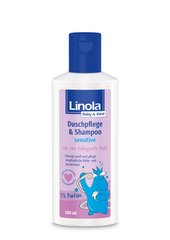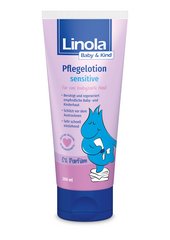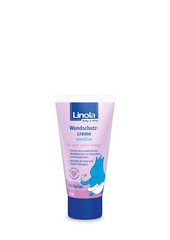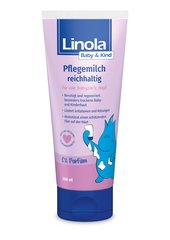Dry Skin in Babies
Causes and Skin Care Tips
We typically associate babies with the idea of soft, delicate skin. However, if a newborn shows dry patches, redness, or flaky skin, many parents quickly become concerned. Is it an allergic rash or even eczema?
The good news is: dry baby skin is more common than you might think and is harmless in most cases. However, the dry areas can cause itching, potentially affecting the baby's comfort.
In this article, you will find useful information on the causes of dry skin in children and valuable tips on how to protect the sensitive skin from further drying out.
Skincare by Linola
Linola for babies and children
Development of Baby's Skin
Why it's so sensitive and dries out quickly
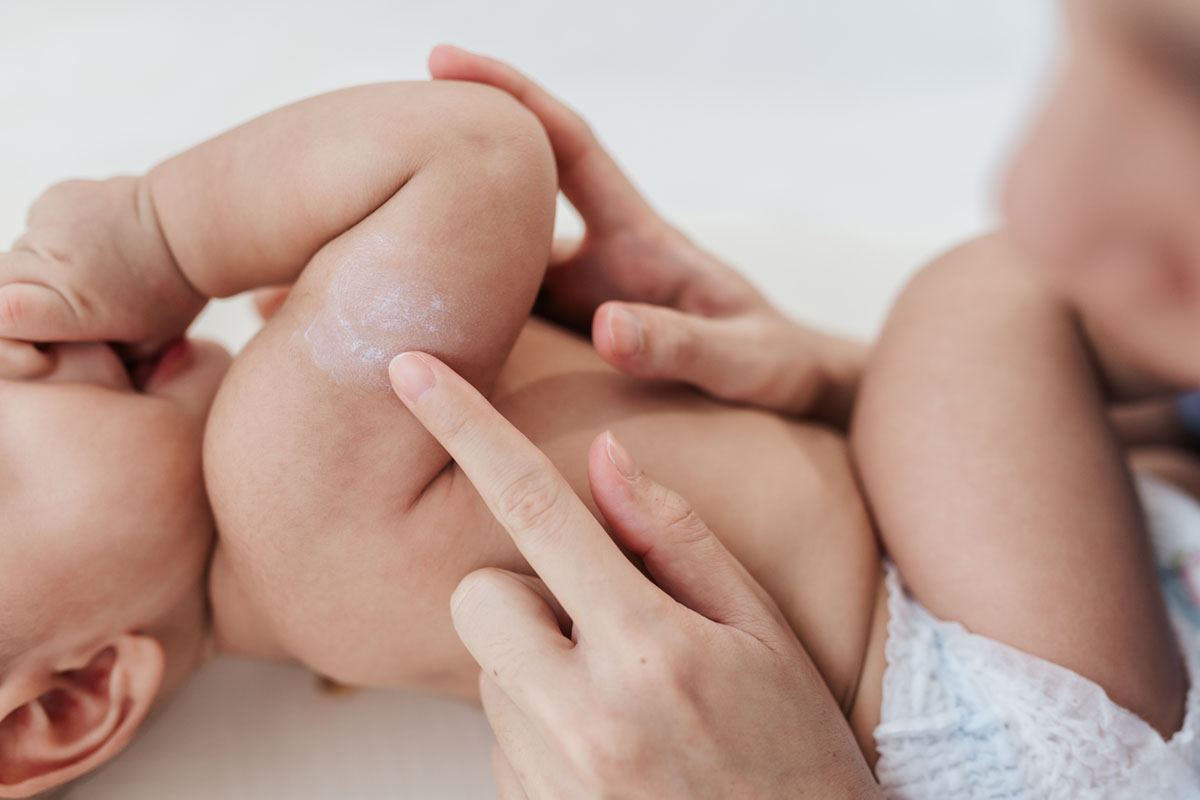
Many babies experience dry skin at least once in their earliest childhood. Remember that the child is surrounded by amniotic fluid for months before its birth. Immediately after delivery, the so-called vernix caseosa provides moisture and fat to the baby's skin, protecting it from infections during the birthing process.
The skin of a newborn is not as developed as that of adults – the skin needs to adjust first and therefore initially reacts more sensitively to environmental influences. This usually manifests as dryness.
So, dry baby skin is typically not dangerous. However, it can become uncomfortable for your child if associated with flaking or itching. In rare cases, very dry skin with itching can also be a skin condition, such as eczema.
Identifying Dry Baby Skin
The dry patches on a baby's skin are quickly noticeable. Initially, the skin feels rougher than usual. Later, the skin becomes flaky and appears slightly cracked before some flakes can shed. These symptoms often appear on the baby's face or stomach but can occur all over the body.
Causes of Dry Skin in Babies
Why does baby skin peel?
The reasons for dry baby skin are varied. Most commonly, the dry skin is a result of the adjustment process after birth, and this is entirely normal.

"There are, of course, different manifestations, but it is common for baby skin to become dry, especially after birth. This is because babies were surrounded by amniotic fluid in the womb. After birth, the skin has to adapt to the environment. The 'old' skin, which was accustomed to the amniotic fluid, peels off and gives way to the 'new' skin."
Edith Janzen, Midwife at the Bielefeld Birthing Centre, Germany
Your child's skin will continue to be relatively sensitive in the coming years. After all, it is significantly thinner than that of adults. In particular, the top layer, the stratum corneum, does not yet have a fully developed skin barrier. This allows moisture to easily evaporate from the skin and harmful and irritating substances to penetrate. However, the incompletely developed skin barrier also allows skincare products to penetrate well into the skin.
Additionally, the natural acid mantle (a film made up mostly of fats) that lies on the outermost layer of the skin is not yet sufficiently developed to protect the skin from external influences. Baby skin, for example, is sensitive to:
- Dry indoor heating
- Sun exposure
- Wind and cold
Depending on the cause, sensitive baby skin is prone to dryness, redness, flaking, or weeping rashes.
Dry Skin Due to Atopic Eczema in Babies
Atopic eczema – also known as neurodermatitis – is widespread among babies and toddlers. If at least one parent has or had neurodermatitis, the risk of the newborn developing it is significantly increased.
This non-contagious condition manifests as redness, dry, flaky skin, and itching, often first on the head and face, and later possibly on the rest of the body.
With neurodermatitis, the baby's still incompletely developed skin barrier is further compromised: the skin quickly loses moisture without suitable care and dries out, while harmful and irritating substances from the outside can easily penetrate the skin and cause irritation.
Especially with neurodermatitis, your baby usually benefits from consistent and continuous skincare. This basic care includes daily application of a suitable cream or lotion that strengthens the skin barrier. For bathing or washing, soap-free and pH-neutral skincare products are recommended as they do not further dry out the skin. Also, seek advice from your paediatrician, dermatologist, or at the pharmacy!
Dry Baby Skin After Bathing
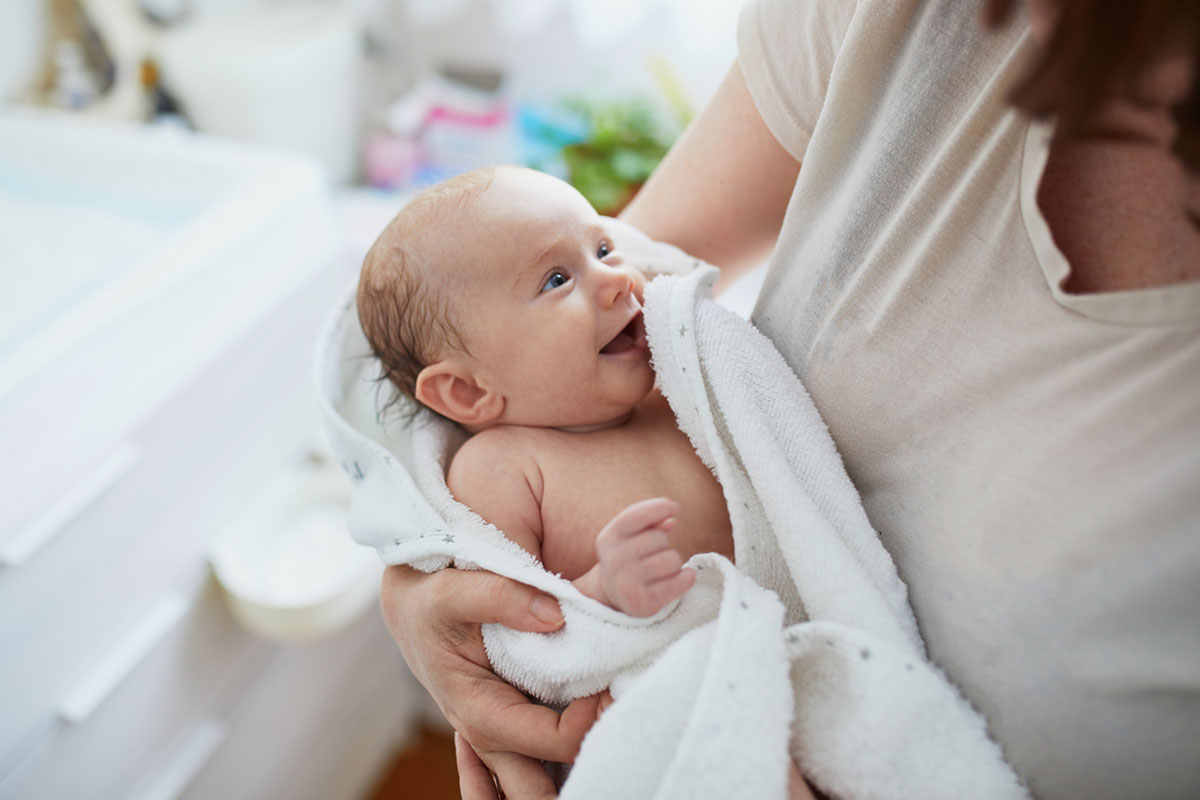
From a purely hygienic perspective, it's usually sufficient to bathe a baby once a week. However, if your child particularly enjoys being in the water, you can wash them several times a week.
If the baby has dry skin, especially after bathing, the cause might be found in the bath additive used. Conventional bubble baths are off-limits for babies, as their composition is not tailored to sensitive children's skin and can dry it out. A better option is a moisturising bath oil suitable for babies and children. By the way, water without any additives is also perfectly fine – ideally, the water temperature should be between 37°C and 38°C.
After the bath, don't rub your child with the towel, but gently pat them dry – don't forget the skin folds in the ears, on the neck, under the arms, and in the groin area. Rubbing can further strain the skin.
Dry Scalp in Babies
What could flaky patches on the scalp mean?
If you notice a dry scalp on your baby, this can also have various causes. Yellowish, greasy-looking flakes on the head indicate infantile seborrhoeic dermatitis, while inflamed, weeping areas point to cradle cap respectively milk crust.
While infantile seborrhoeic dermatitis is usually harmless and heals on its own within a few months, cradle cap/ milk crust can be a precursor to atopic eczema in babies. Since a baby's skin can dry out quickly, it's recommended to regularly moisturise with a light lotion or rich nourishing milk tailored to the child's skin texture.
Care for Dry Baby Skin
What helps with dry skin in babies?
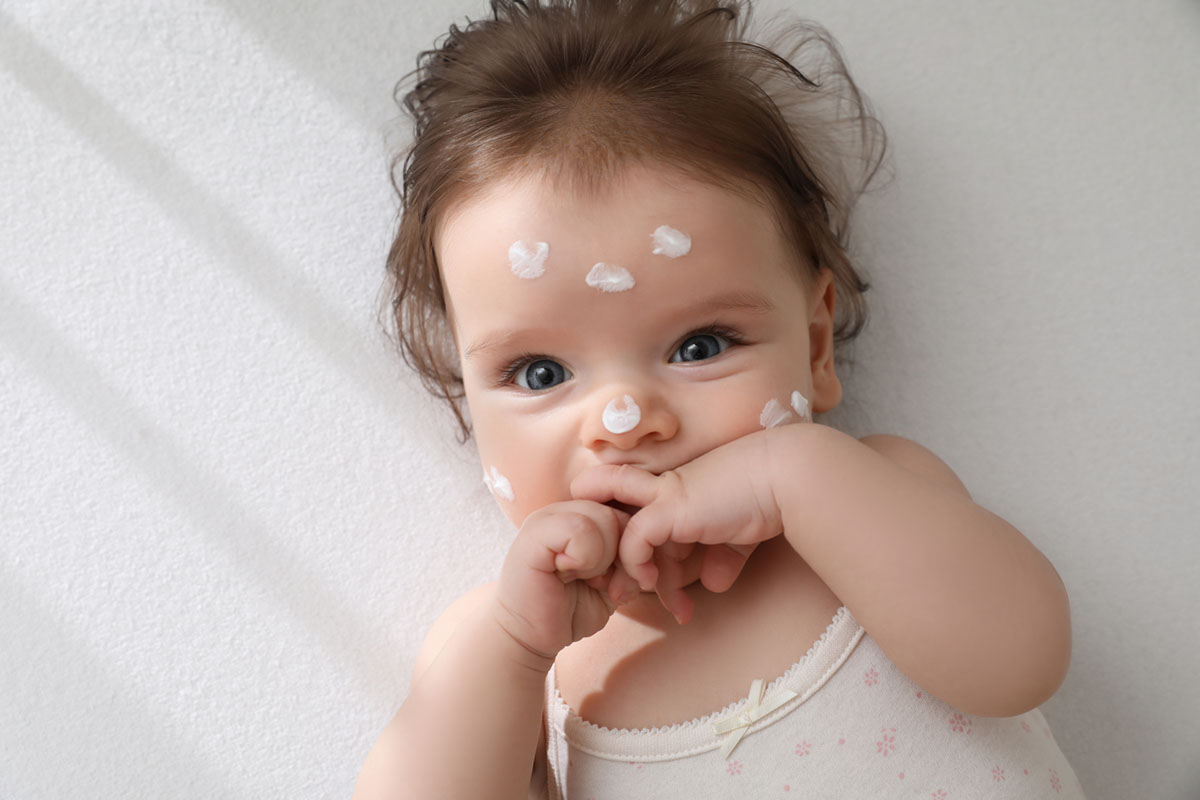
If your newborn has dry skin and is undergoing the described flaking process shortly after birth, you can just wait until the old skin layer has detached on its own.
If your baby starts scratching, you can moisturise the dry skin with hydration, fat, and possibly itch-relieving creams or lotions suitable for baby skin. Always ensure that your child's fingernails are trimmed short and clean to prevent injuries from scratching.
Which Cream for Dry Baby or Children's Skin?
Dry baby skin, which is neither sore nor attributable to inflammatory conditions, can be treated with light care. It's advisable to moisturise the baby once daily or, if necessary, several times a day with a lotion. The lotion should be applied thinly. Initially, you should avoid the principle of "more is better" and the associated use of a rich fat cream or oil. A light cream or lotion for babies is often entirely sufficient.
Linola Baby & Kind
For baby-soft skin
Content verified by

Content verified by: Edith Janzen
Edith Janzen has been a midwife at the Birthing Centre Bielefeld in Germany since 2012 and is a mother herself. Her areas of expertise include out-of-hospital obstetrics, prenatal care, and postnatal care. She supports numerous families from the beginning of pregnancy through childbirth to the end of the postpartum period, providing advice and assistance during this special phase of life.
Additional topics & information
All about child and baby care
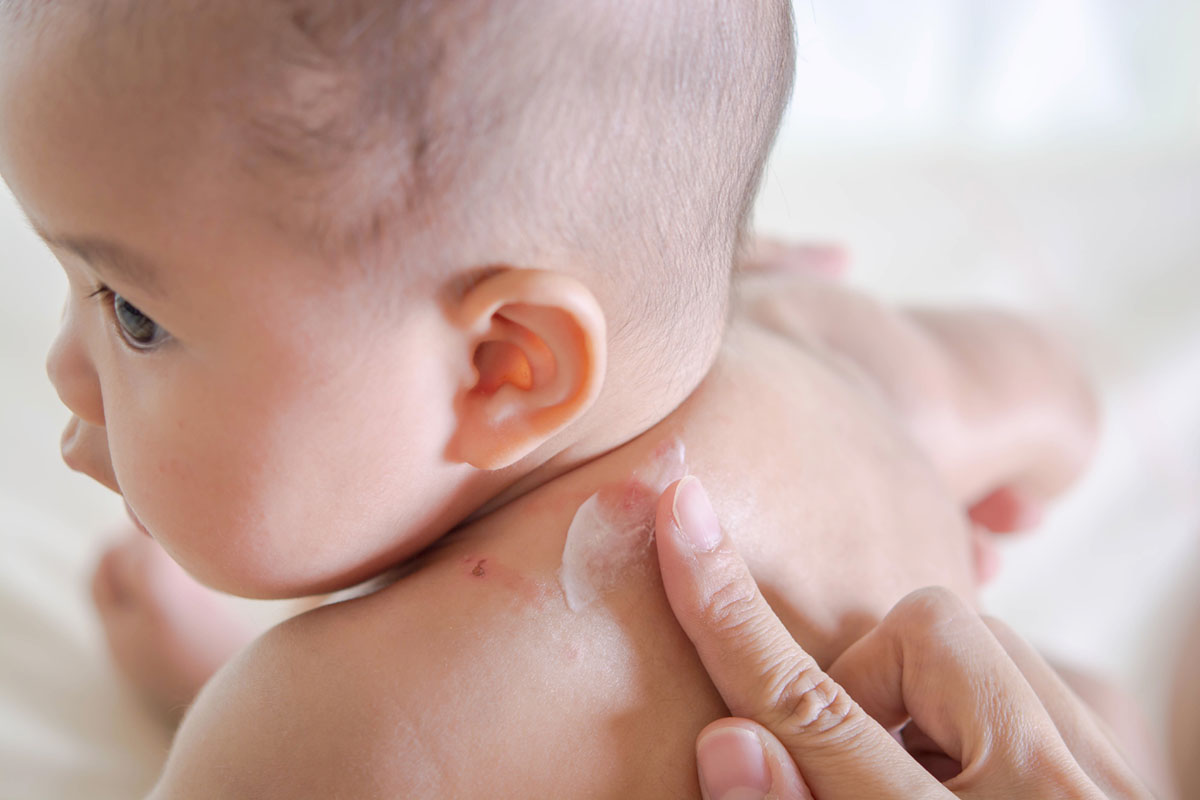
Rough patches on the body – What to do about rough baby skin?
The sensitive baby skin can quickly become rough and show dry areas. There are a variety of possible causes – most of them are harmless. Here, you'll learn how to care for and soften rough skin in babies.
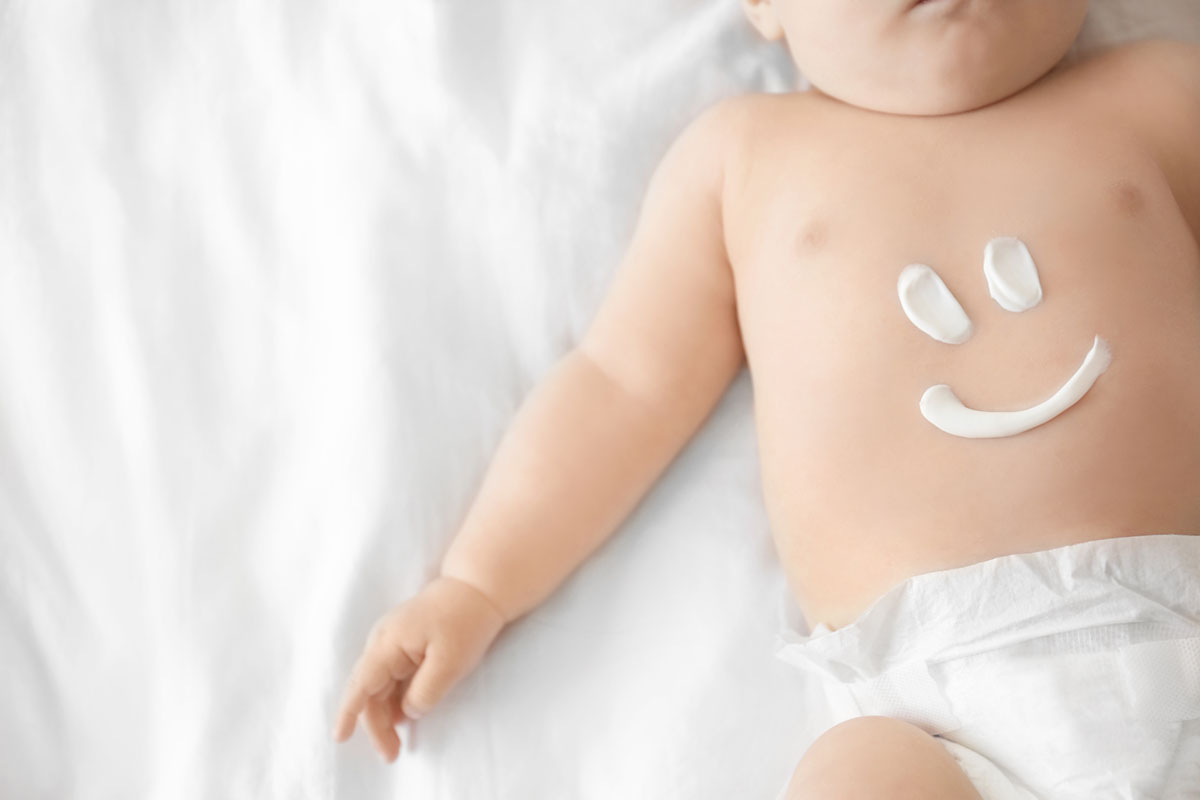
Moisturising Your Baby – What Matters in Baby Skin Care
To moisturise your baby or not? This question can't be answered broadly. What's certain is that baby skin is much thinner than that of adults and therefore needs special protection. Here, you'll find tips on what to consider for baby care.
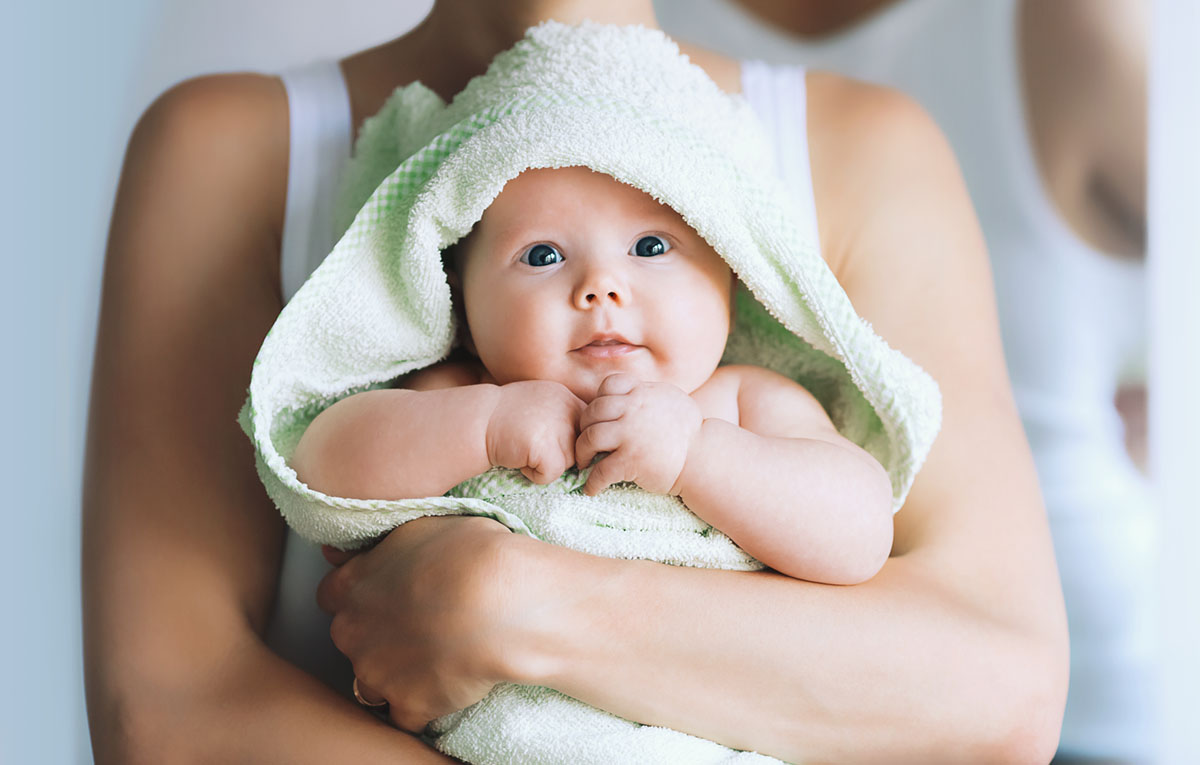
Bathing of Newborn – Tips for the first Baby Bath
Splash, splash: When is the best time for the first baby bath? And how often should babies bathe? Here parents can find answers to these and other questions about bathing babies.

